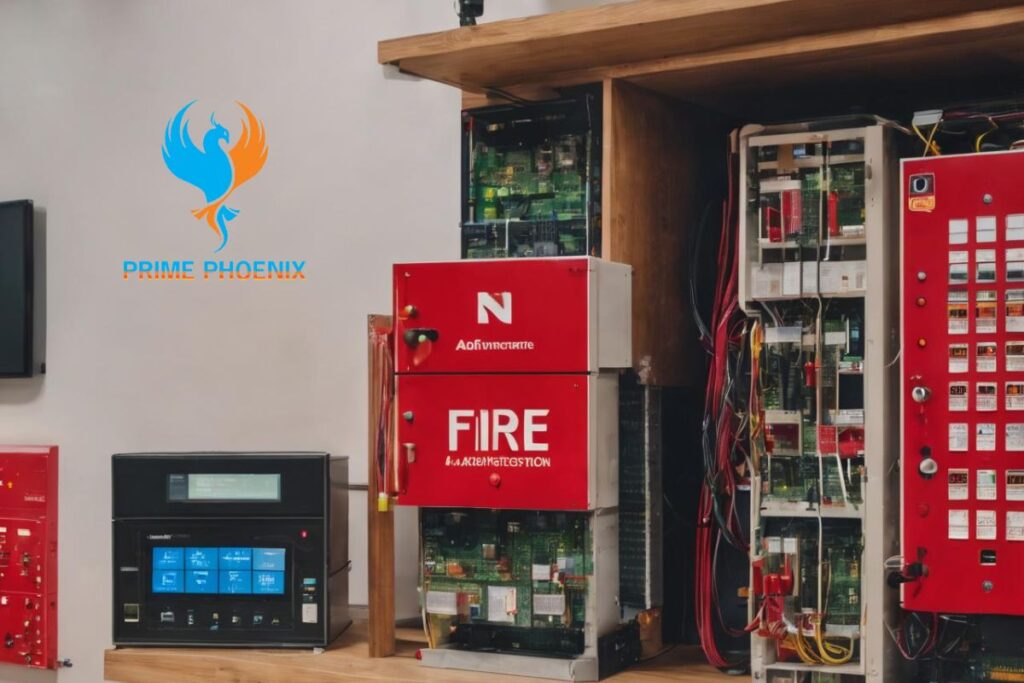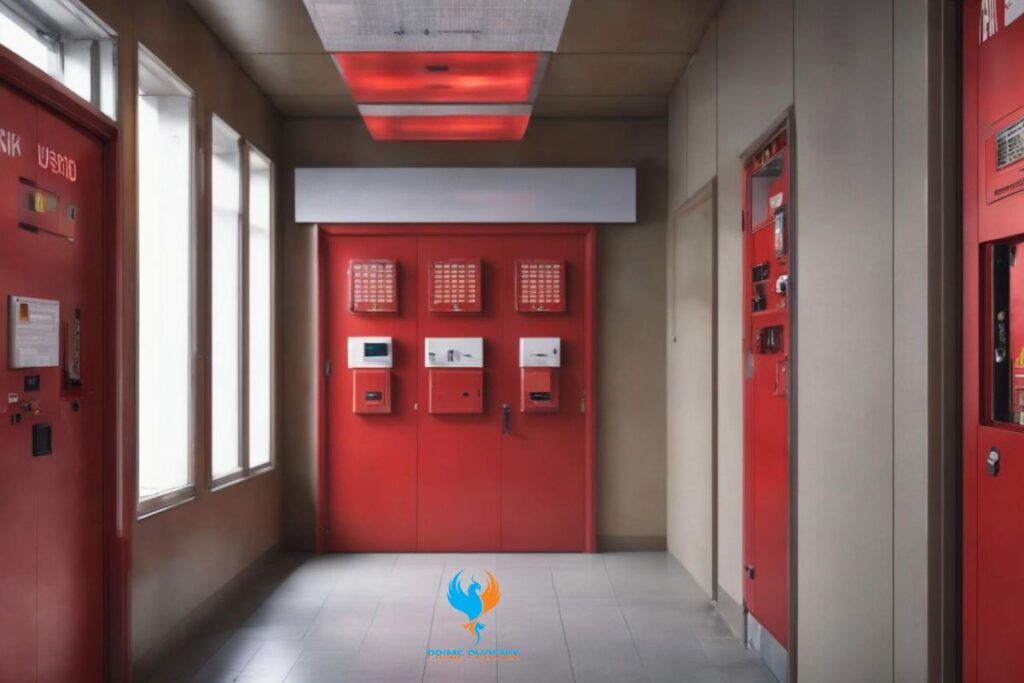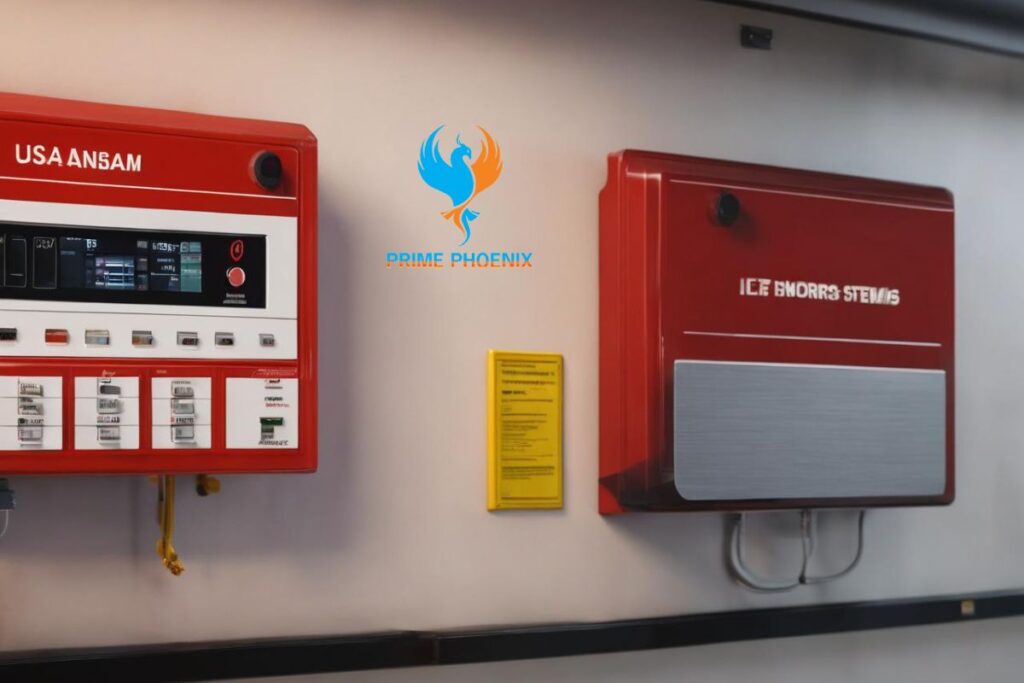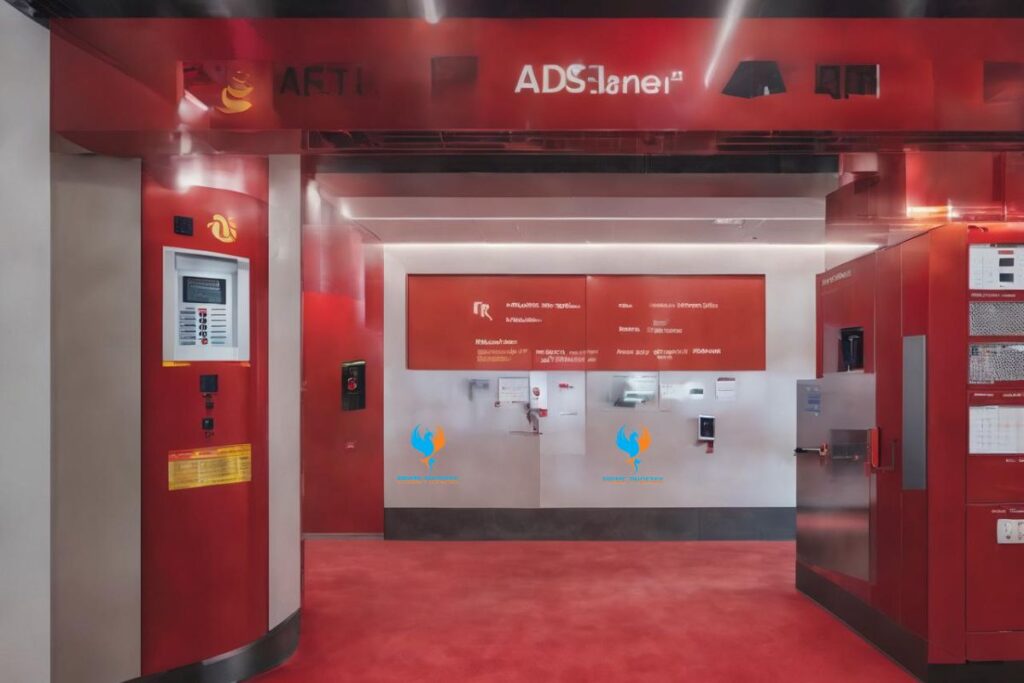- Ras Al Khor Industrial Area 2
- +971 4 330 2170
- +971 547919584
Fire safety should always take top priority in all buildings. An integral part of ensuring safety is having a reliable fire alarm system installed. However, with the various types of systems available, choosing the right one can prove perplexing. This article seeks to explain addressable fire alarm systems and how they differ from addreseble system. We’ll also look at the key components, operation and benefits of addressable panels.
Prime Phoenix is a leading fire protection company based in the UAE. With over 15 years of experience, we specialize in the design, installation and maintenance of advanced addressable fire alarm systems. Our qualified technicians can assist you in selecting the ideal solution for your property and ensuring compliance with fire codes.
What is an addressable fire alarm system?
An addressable fire alarm system is a type of life safety system that uses electronically-identified devices linked to a central control panel called an addressable fire alarm control panel (FACP). Each detector, module and device is identifiable and can be individually monitored, configured and controlled from this central hub.
The control panel communicates with addressable devices using a protocol that attaches a unique numerical or alphanumeric “address” to each device. This allows the panel to identify the exact location of fire or trouble signals. addreseble system, on the other hand, treat all alarm-initiating devices as anonymous points.

Key components
The main components that make up an addressable system include:
- Addressable fire alarm control panel (FACP) – The central processing hub that receives and interprets all panel information. Popular brands include Notifier, EST, Gamewell-FCI and Simplex.
- Addressable smoke/heat detectors – Sensors that can detect smoke/fire and transmit unique device addresses. Photoelectric and ionization models commonly used.
- Addressable modules – Used for monitoring things like sprinkler waterflow valves, tamper switches or duct detectors.
- Signaling devices – Strobes, horns or speakers used to notify occupants during an emergency. Can be addressable or conventional.
- Addressable pull stations – Manual call points that communicate a distinct number.
- Monitoring interface – Key for connecting the control panel to a monitoring center company via telephone lines or IP.
- Configuration and programming software – Usually proprietary to the panel brand for initial settings and ongoing adjustments.
How it operates
When smoke or heat is detected by an addressable sensor, the device immediately transmits a signal identifying its unique serial number to the FACP. The panel then pinpoints the exact location of the alarm and can display it on an interactive graphic screen.
The FACP also has the ability to interrogate and perform maintenance operations on any device. It can request status updates, filter out detector errors wirelessly without jeopardizing system functionality or evacuating premises. This allows for real-time diagnostics, preventing false alarms.
In case of a true fire event, the control panel immediately activates and coordinates all evacuation signaling: it flashes strobe lights and sounds audible alarms based on the program. Responders are guided to the precise area and floor level of the emergency’s origin. This saves lives by streamlining response efforts.

Difference between Addressable and Conventional Fire Alarm Systems
While both styles alert occupants during emergencies, addressable and conventional fire alarm systems diverge in key functionality:
- Addressable systems uniquely identify each detector, module and pull station by serial number. The FACP can precisely show the alarmed device on a layout diagram or screen.
- Conventional systems monitor detector activation as a single point only. The exact device remains anonymous so location requires sweeping the area to pinpoint it.
- With conventional setups, all devices are hardwired back to the control panel. This can become an intricate web for large complexes and inhibits future alterations.
- Addressable networks communicate device status and messages between the FACP and remotely located addressable gadgets using two-wire signaling circuits rather than individual runs. Future additions involve basic tweaks instead of repulling cable.
- Conventional panels lack the processing power for intricate programming. They activate evacuation in a single stage always. Addressable units divide buildings into tailored response zones and plans.
So in summary, while a basic conventional setup suffices for smaller venues, large evolving campuses and mission critical facilities require the precise, scalable functionality of an expertly engineered addressable solution.
With its ability to isolate events and pinpoint locations, an addressable fire alarm system gives administrators and first responders valuable time in an emergency situation. The enhanced protection is well worth the investment for large buildings with high occupancy rates.

Benefits over conventional systems
Addressable fire alarm panels provide numerous advantages when compared to a traditional single-point monitored system:
- Pinpoint accuracy – The exact location of any alarm can be clearly identified on screen down to the specific detector. Conventional systems only know the general area.
- Two-way communication – The FACP can interrogate and receive status updates from addressable devices on demand. This allows remote monitoring and maintenance without a technician visit.
- Discriminate alarming – Dissimilar spaces can be zoned independently and set to different response plans based on the type of possible emergency in each area.
- Future expandability – As needs change, additional addressable devices can easily be added without costly upgrades or overhauls. New panels tend to support many thousands of points.
- Event history retention – Specific incident logs are permanently stored with records of all alerts, errors and technician interactions. This supports compliance reporting and troubleshooting.
- Wireless offerings – Some systems allow wireless monitoring of devices like smoke alarms for hard-to-reach locations or renovations. Installation becomes even more streamlined.
- Faster response – The control panel receives information at the speed of electronics versus slow human response times with a conventional system. Overall emergency reaction is optimized.
Frequently Asked Questions
Q: How do addressable fire alarm systems compare price-wise?
Installation costs are higher upfront compared to a basic conventional system. However, the long-term cost savings from reduced inspection/maintenance fees and expandable scalability usually offset the premium. Maintenance downtimes are minimal as troublesome devices can often be serviced remotely.
Q: Which areas benefit most from addressable technology?
Very large or complex properties with immense device counts such as hospitals, universities, and office towers greatly profit from addressable capabilities to effortlessly manage and track all components. Renovations and phased projects also smoothly integrate thanks to flexible monitoring options.
Q: What certification is required for technicians?
All Prime Phoenix installation technicians are qualified with a civil defense card as required by NFPA 72 standards to properly program and service addressable fire panels and networks. Only qualified, licensed individuals perform any life safety work.
Contact us today for a customized quote and product demonstration at one of our UAE locations. Our team of experts will assess your building’s specific needs and compliance requirements to recommend the ideal addressable solution. Don’t compromise on safety. Trust Prime Phoenix for all your fire protection needs.
Case Study: International School
A large international school campus with 12 buildings underwent extensive renovations and expansions requiring a unified fire protection upgrade. Previously, each structure had independent conventional systems. Prime Phoenix engineered and installed an addressable network supporting over 2500 monitored devices across the 86-acre site.
We seamlessly integrated existing devices and added many wireless addressable products like multisensor smoke detectors, beam detectors and mass notification nodes. These support challenging areas like atriums and research labs. Custom programming divides buildings into logical zones while keeping in common evacuation protocols.

School administrators now benefit from the centralized Fireworks software for remote diagnostics, report generation and firmware updates across the ENTIRE system from any location. Incident response performance is lightning fast—pinpointing events down to the specific lab table. This gives occupants time to safely exit and lets responders swiftly handle any emergency. Reliable life safety is assured through the sophisticated addressable solution.
Conclusion
While initial outlay may seem higher versus a conventional system, well-designed addressable fire alarm systems deliver immense long-term value through reduced total cost of ownership, future flexibility and unmatched accuracy in locating potential hazards—greatly outweighing that modest premium. Convening accurate, dependable emergency evacuation through fast, localized alarm initiation and response saves lives and properties which is far more invaluable.
At Prime Phoenix, we have years of experience to properly evaluate your organization’s unique risks and advise the most suitable addressable solution within your budget. Contact our qualified team today to arrange an on-site survey and personalized quote for a state-of-the-art addressing system from various industry leaders. Protect what matters most with an addressable fire alarm system partner you can trust.
